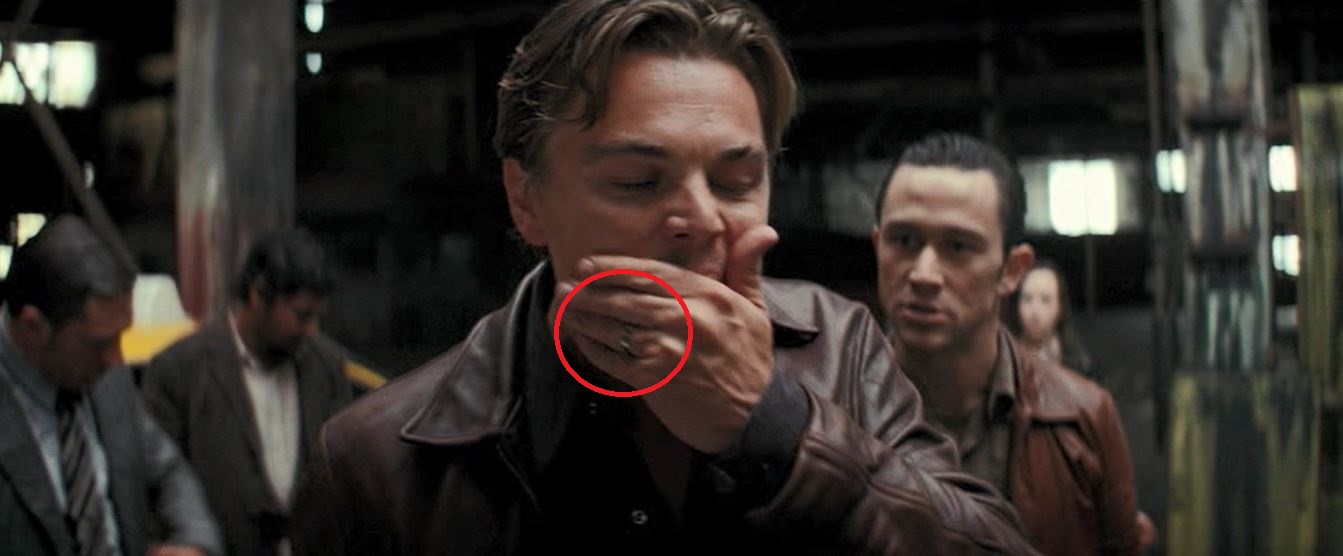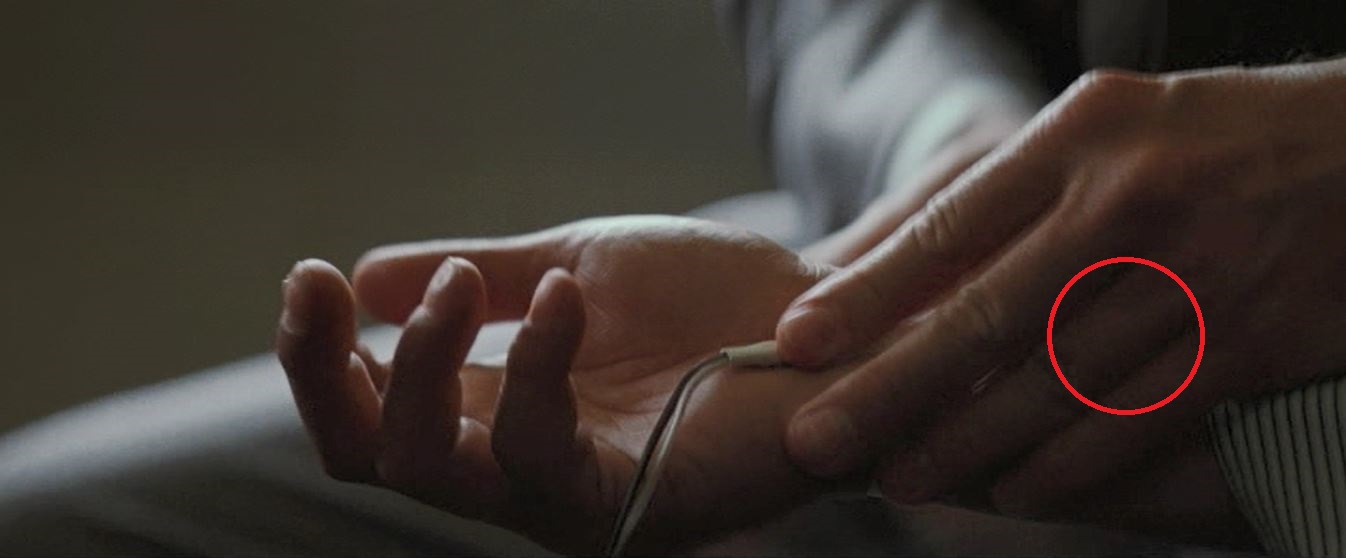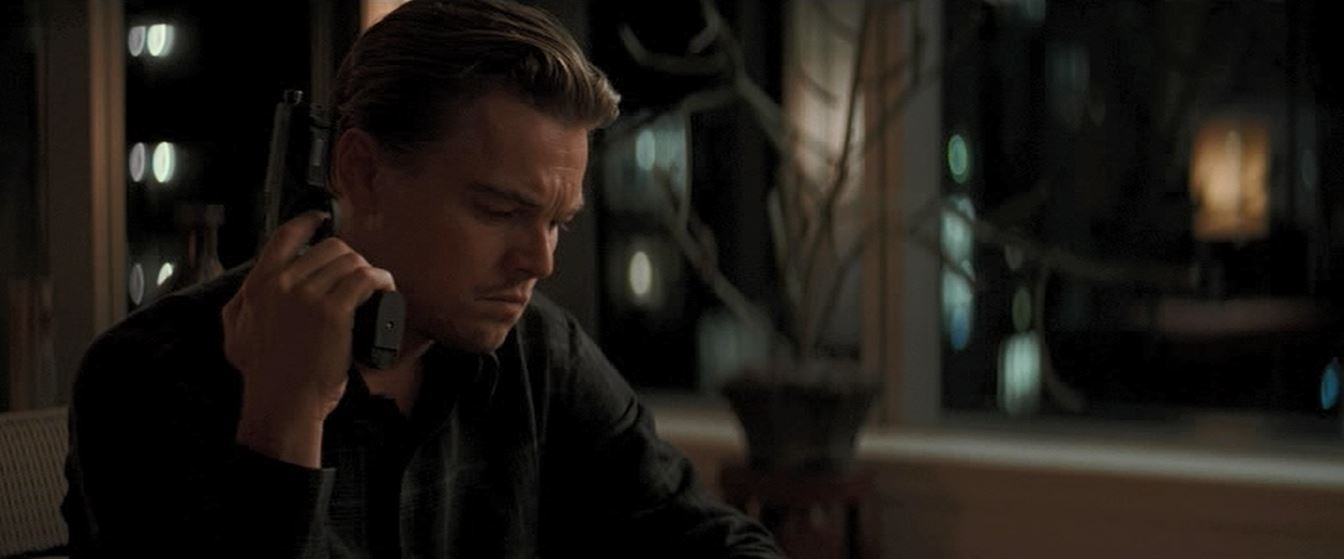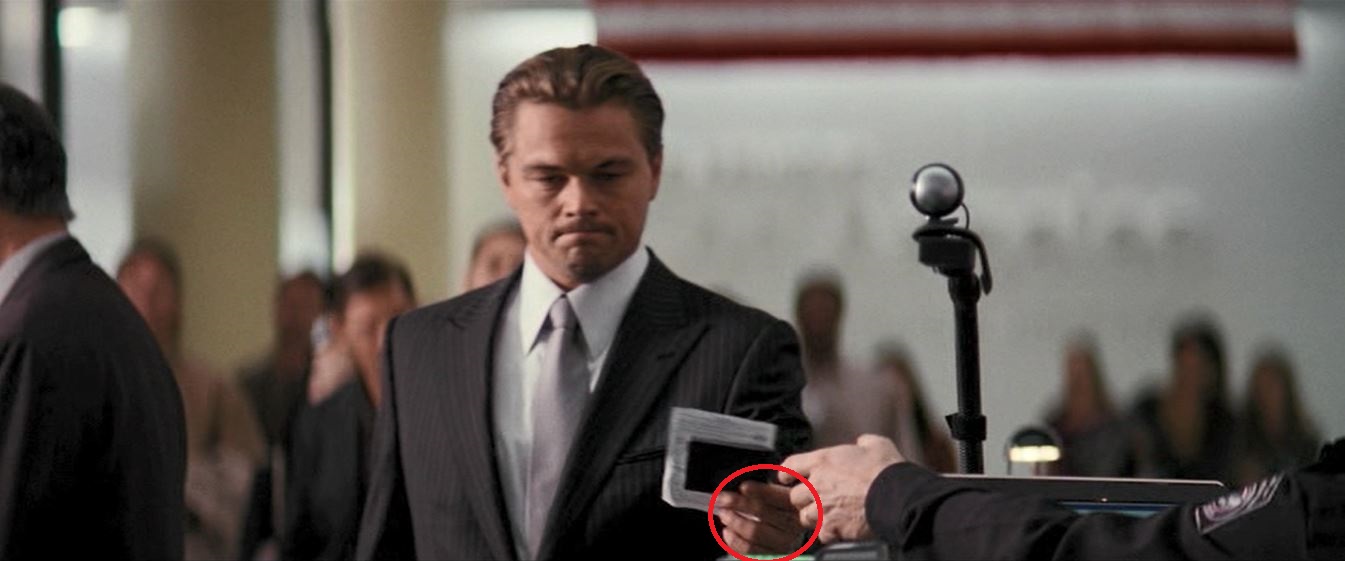How did “Inception” really end?
Quick Answer: Six years after its premiere, fans of Inception are still asking the same question: Was Dom Cobb dreaming? The answer to that question depends on what Dom’s totem is. If his totem is his wedding ring, then he is not dreaming. But if it is the spinning top, the answer is less clear. The camera focuses in on the spinning top, then, as it begins to wobble, cuts away before we see if it topples over. Whether he is dreaming or not, the ending brings Dom the happiness he sought throughout the film, providing Dom, if not the audience, with a sense of closure.
Six years after Christopher Nolan’s mind-bending Inception (2010), viewers are still scratching their heads. The film’s complex plot has incited a number of questions, the most common one regarding the film’s ambiguous ending. In an interview with Entertainment Weekly, Nolan admitted, “I’ve been asked the question more times than I’ve ever been asked any other question about any other film I’ve made.” And yet, the question still remains: Did the top stop spinning or what? Was Cobb in a dream or reality throughout the film? Nolan still hasn’t come close to revealing the answer. “What’s funny to me,” he added, “is that people really do expect me to answer it.” While Nolan may not want to stray from his film’s intentional ambiguity, that doesn’t mean we’re not allowed to parse the conclusion.
Throughout Inception, Cobb (Leonardo DiCaprio) spins a top to verify the reality of any given moment. According to Cobb, if the top spins indefinitely, he’s in a dream. If it falls, he’s in reality. In the film’s much debated final moment, Cobb spins the top and walks away, while the top continues spinning.
Christopher Nolan has never explicitly revealed how people are to interpret the notoriously ambiguous ending of Inception (2010). It’s no surprise that a director would want to keep the question open to some extent: the film is his art, open to exploration and interpretation. Sparking discourse and questioning is an artist’s euphoria, and, years after release, Inception remains one of the most discussed films in the world. But while the director has refrained from offering a “correct” conclusion to or explanation of the film’s final scene, he has made suggestions about Inception’s intent and overall message. In his 2015 commencement address at Princeton, he said, “I feel that, over time, we started to view reality as the poor cousin to our dreams, in a sense ... I want to make the case to you that our dreams, our virtual realities, these abstractions that we enjoy and surround ourselves with, they are subsets of reality… The way the end of that film worked, Leonardo DiCaprio’s character, Cobb – he was off with his kids, he was in his own subjective reality. He didn’t really care any more, and that makes a statement: perhaps, all levels of reality are valid.”
We can never know with complete certainty whether Nolan has a fully defined personal interpretation of Inception’s ending. However, his statement that Cobb doesn’t care in the end whether or not the top keeps spinning gives us a clue that the top may not be as substantial to unlocking the film’s mysteries as the closing image implies. Nolan’s words become poignant here as Cobb finally abandons his obsessive and paranoid attention to the question of what is real. He chooses to no longer care whether the top spins or falls. He’s been placed in a reality where he has let go of the burden of his lost wife and has been reunited with his children, which has been his ambition throughout the entire film. This version of reality is perfect for him, and whether or not it is actually real life is rather unimportant. This is where he wants to be. Reality is relative.
Choosing to end the film on a questioning note is a clear example of meta filmmaking, in which viewers are reminded they are watching a film so that they are forced to compare their outside reality to Cobb’s world and, implicitly, a dream. The ambiguous style of storytelling also mirrors the philosophy and themes contained within the story, which constantly questions our usual indicators of what is real or imagined.
In order to analyze the ending fully, first let’s revisit the rules and clues Nolan gives us throughout the film.
The Rules
To Collider, Nolan said, “For the ambiguity at the end to work, you need to see that Cobb’s world and the dream world are very similar. And you need to doubt Cobb.”
One of the first things to remember is that, notwithstanding the sci-fi psychology of the film, Cobb and his crew are con artists. They are snake oil salesmen of the most ingenious variety, entering the mind of their mark to extract information or, in the case of Inception, plant an idea. To do this, they create false realities that work in their favor. In the film’s first few minutes, Cobb tells us he is the best in the world at this type of misdirection. We can see that as a harmless boast, or we can see it for what it is—a warning.
Cobb is an unreliable narrator both because of his profession and because of his psychological distress. This isn’t instantly apparent but becomes clear through comments made by other characters. Those around Cobb repeatedly reference the number of times he doesn’t follow his own rules and acts in opposition to the mandates he puts upon his team members. For instance, nobody should know how another person’s totem works, yet everyone understands his—and it isn’t even his. Despite his rule that dream worlds should never be constructed out of entirely real-life places, Cobb has an entire dream vault of real-life situations involving his dead wife, Mal (Marion Cotillard).
Then we have the dream process. Inception’s science creates a layered, shared state of dreaming, in which people can dream within dreams and stack the depths of their dreaming upon one another. The deeper one gos, the more detached from reality they are, the more vivid the faux-reality of the dream seems to be and the slower time feels. Limbo is the furthest depth of dreaming—a comatose state which can scramble the brain and become impossible to wake from, trapping someone forever. There, one can forget reality exists, and can spend a lifetime in the course of hours. Cobb and Mal once existed in limbo and shared an entire lifetime, and Cobb believed she was unable to process reality when they got out.
It is within this layered dreaming that the bulk of the film’s primary “heist” takes place. Saito (Ken Watanabe) has hired Cobb and his team to infiltrate the mind of energy heir Robert Fischer (Cillian Murphy) and plant the idea that Fischer should dissolve his company.
The Inception dream consists of several levels:
Finally, we have projections, which are the brain’s constructs that populate the fantastic dream world with manifestations that reflect the dreamer’s perception of reality. These give the dream world its authentic feel. For Cobb, they come in the shape of Mal, who he believes wants him to return to limbo. She endlessly works to thwart his efforts and trap him there with her. Mal believed limbo was real life, and once Cobb snapped her out of it, she failed to believe life with her children was true existence. She wanted to die again and return to a higher level of reality she believed still existed. As unlikely as this sounds, the movie implies that there is a very good chance she could be right.
- Level One - the rainy city dreamt by Yusuf (Dileep Rao);
- Level Two - the hotel sequence dreamt by Arthur (Joseph Gordon-Levitt);
- Level Three - the snow area, dreamt by Eames (Tom Hardy); and
- Level Four or “Limbo” - a state of raw impulse fabricated from Cobb’s previous experience there.
The Interpretation
The final scene of Inception is arguably the most discussed element of the film. It forces the viewer to question Cobb’s reality and wonder whether or not he is still dreaming. At the end, the spinning top sets up the final question: is this actually reality, or is Cobb still dreaming without knowing it? He is the top extractor in the world, gifted at the art of illusion. Could have spent so much time jumping in and out of reality that he has fooled himself into believing this is real life, when he is actually still asleep? If so, Mal was right all along.
Many of these questions speak to the conversation Cobb has with the old man in the basement of Yusuf’s chemistry shop. Talking about the dozen people sleeping who return everyday to dream, the man says, “Their dream has become their reality—who are you to say otherwise, son?” One fan theory posits that, as the film goes on, Cobb never actually leaves that room. This possibility is supported by the scene that shows Cobb up after dreaming of Mal, splashing water on his face in the bathroom and attempting to spin his top. He is interrupted and drops the top on the floor, never confirming reality.
But the theories surrounding that scene and Cobb’s top in general raise an important point: we know Cobb to be an unreliable narrator. Is his totem just as unreliable? After all, it isn’t his but Mal’s. He stresses that nobody should ever touch someone else’s totem, and Arthur says a totem is to let you know you aren’t in someone else’s dream. Further, Cobb’s totem is not special. What makes Arthur’s die unique is that it always lands on the same number, which only he knows. Ariadne’s bishop is weighted in one direction, which only she knows. Yet everyone knows about Cobb’s top and how it works, and the behavior that indicates he’s in reality is simply the top functioning as any normal top would—it falls over. Anyone could project Cobb’s top within a dream however they wanted to, and he could certainly dream any outcome for his own totem.
Could the film be a dream from start to finish? Sure. Inception goes so far as to have no title screen or opening credits, sticking us straight into the story, just as Cobb explains our entrance into dreams. We never really know how they start—we’re just there.
David Kyle Johnson at Psychology Today presents a laundry list of evidentiary points to the “all a dream” idea: the Mombasa overhead shots revealing the maze-like nature of the city at a moment that is supposed to be the “real world” for Cobb; Mal’s awkward suicide from a hotel room window across a huge gap from the window where she logically should be; Miles’ (Michael Caine) insistence that Cobb “return to reality” during their conversation; the length of the Edith Piaf song that signals the end of the dream sharing an exact numeric runtime with the film itself; the recurrence of the same numbers throughout the film (3502, 528, 491). He feels these are clues that foster the idea of everything being a dream.
Could Cobb have returned to reality at the end? If the entire film isn’t a dream, characters like Miles only existed in the real world, and he is present at the end. Cobb’s children are dressed differently and have aged when he finally sees their faces in the final shot, indicating a new realization that surpasses the muddled back-of-the-head shots in every previous instance.
The image of Saito as an old man bookends the film, indicating that his death at the beginning of the inception (Level One) sent him to limbo, and his time there felt like decades during the minutes it took Cobb and Ariadne (Ellen Page) to arrive. Thanks to some choice key phrases repeated throughout the film (notably “leap of faith” and “old man waiting to die alone”), along with the presence of Cobb’s top, the two men realize where they are and get out.
The ending of the film leaves us with layers of questions rather than any answer: Was the whole movie part of an elaborate dream? If so, whose, and where or when is it being dreamt? What role does the spinning top play in identifying the true nature of Cobb’s experiences? But of all our questions, perhaps the most important is none of those but, “Does it matter?”
Cobb is the embodiment of regret. The utilization of the Edith Piaf song “Non, Je Ne Regrette Rien,” or “No, I Regret Nothing,” is a fitting musical countdown to the end of a dream. When he and Saito meet in limbo and utter “Take a leap of faith. Come back, so we can be young men together again,” the dialogue is neatly contrasted to Cobb’s projection of Mal who seeks to keep him trapped within the dream. When Cobb tells Mal they lived an entire life together in limbo, he realizes he needs to let her go. Earlier in the film he notes that positive emotions always win out over negative ones. As such, he’s able to take Saito’s advice and not die as an old man, alone. In the final moments, Cobb appears to get everything he has longed for. He appears to have let go of Mal and fulfilled what he and Saito discussed. But whether he has done it by permanently succumbing to limbo, by validating that Mal was right and his life was always a dream, or by returning to reality, we don’t know. But again, it really doesn’t matter. Cobb has found his redemption and is happy in that reality, whatever form it takes.
One thing is for sure: Perception is reality.
Inception centers around the idea of accessing someone’s mind, of delving into one’s subconscious via one’s dreams and extracting information. Dom Cobb (Leonardo DiCaprio), the most skilled extractor in the world, is hired by a businessman, Saito (Ken Watanabe), to perform a new variation on the extraction process, called “inception.” Instead of taking out information, the theory behind inception is to enter one’s subconscious and plant an idea there. As we learn, this is a near-impossible task. In order for the idea to take, the intruder has to plant it in such a subtle way that the subject believes it was his or her own idea. In typical Nolan fashion, layers of complexity continue to take shape. It turns out that dreams can have multiple levels. There is a dream within a dream, and then a dream within a dream within a dream. Dom and his team are tasked with infiltrating three levels of these intricate dreams-within-dreams.
The multilevel storytelling becomes confusing, both for audiences and for Dom. It’s difficult to keep track of what is a dream and what is reality. This confusion comes to a head at the film’s final cliffhanger, plunging viewers into uncertainty.
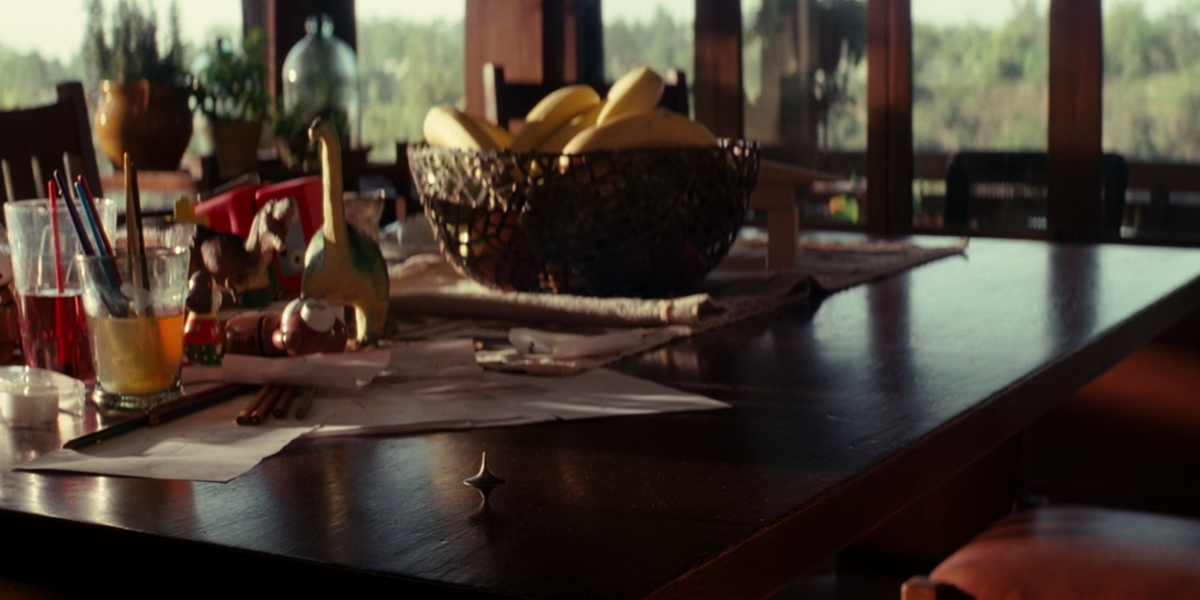
The final scene of Inception
The ending is rendered so perplexing because of an object known as a totem. As the intruders enter a dream, they must carry with them a totem, an object that differs depending on whether you’re in reality or in a dream. For example, Arthur’s (Joseph Gordon-Levitt) totem is a loaded die. The idea is that one side is heavier than the others, so when rolled, it will always land on that side. If it doesn’t, he knows he’s dreaming. Ariadne’s (Ellen Page) totem is a slightly hollowed out bishop. If the weight is different, she is dreaming. The totem allows the intruders to be definitively aware of what is real and what is not. Dom’s totem, the top, does not topple over when he is in a dream; it just continues to spin. So at the end of the film, when he is finally reunited with his children, he spins the top on the table. The camera focuses in on it, then, as it begins to wobble, cuts away before we see if it topples over. This begs the question: is Dom dreaming? But before we can get to that, there is another question to consider: is the top really his totem?
Though there are countless theories as to what Dom’s true totem is, the most likely candidate is his wedding ring. Throughout the film, he can be seen wearing it whenever he is in a dream, but when he is in the real world, he does not wear it.
Dom Seen In a Dream With His Wedding Ring
Dom Wakes Up Without His Wedding Ring
Although the alternating presence and absence of the ring piqued the curiosity of Inception theorists, the ring cannot be Dom’s totem. A totem is a physical object that you can have in both worlds, it being the way one can distinguish between reality and dreams. Because Dom does not wear his ring in the real world, it can’t be his totem. The top, meanwhile, exists in both realms. Dom repeatedly spins the top in reality, holding his breath all the while.
Dom Waits to See if the Spinning Top Falls
At one point in the film, Dom holds a gun to his head, prepared to kill himself if the top does not stop spinning, as killing yourself in a dream wakes you up. When it topples over, his relief is visible. This action does not make sense unless it is truly his totem.
Now, this doesn’t mean that the wedding ring was never his totem. It’s possible that it once was, when his wife, Mal (Marion Cotillard), was still alive. Her totem was the spinning top; we know this for certain. Once she died, it’s likely that Dom took it as his own. It is most likely a mixture of guilt and sentiment that made him do this, but it could also have to do with their time in limbo. He snuck into her childhood house when they were lost in limbo and touched the spinning top, her totem at the time. You are not supposed to touch another’s totem, as it defeats the purpose of the object’s uniquely individual nature. Did it pass to him when he did this? Is this part of the reason Mal lost a grip on reality?
If the spinning top was no longer Dom’s totem at the end of the movie, would it matter if it toppled over or not? There’s no clear answer. However, if it was still his, we can’t say for sure if he was dreaming. In choosing such an ambiguous ending, Nolan seems to be more interested in Dom’s internal struggle than the dream-reality dichotomy. Throughout the film, Dom tries to come to grips with his wife’s death, the nature of reality, and where he truly belongs. At the end of the film, Dom is reunited with his children; he is finally happy.
While Nolan has refrained from commenting on the “correct” explanation of the film’s final scene, he has discussed Inception‘s overall message. In his 2015 commencement address at Princeton, he said, “I feel that, over time, we started to view reality as the poor cousin to our dreams, in a sense… I want to make the case to you that our dreams, our virtual realities, these abstractions that we enjoy and surround ourselves with, they are subsets of reality… The way the end of that film worked, Leonardo DiCaprio’s character, Cobb – he was off with his kids, he was in his own subjective reality. He didn’t really care any more, and that makes a statement: perhaps, all levels of reality are valid.”
Ultimately, it is Dom finally achieving happiness and closure that’s important. He doesn’t wait to see if the top stops spinning, suggesting that he doesn’t really care anymore. He just wants to be with his children, and now that he can be, that’s all that matters.
Dom Returns Home Without His Wedding Ring
That said, the top did look like it was beginning to lose momentum, which leads us to believe he was awake and in the real world. Moreover, even if the wedding ring was his totem by the end of the movie, we know for sure that he wasn’t dreaming. When he gets off the airplane and into the airport, you can see his ringless hand when he gives over his passport, indicating that he is in reality. In any case, whether or not Dom is dreaming, the film concludes with him being happy and fulfilled. And isn’t that what counts?


